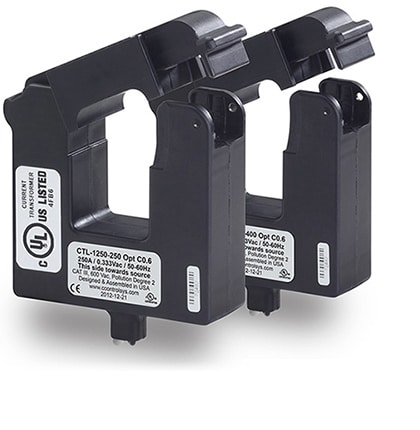Newsletter – Summer 2013
 Briefly, we have had a good 2nd quarter as we look forward to our busiest season.
Briefly, we have had a good 2nd quarter as we look forward to our busiest season.
Thanks to many of you who visited us at EMC in Las Vegas last month – while the local foot traffic was less than what we hoped, EMC, Globalcon and WEEC, the three energy shows presented by the Association of Energy Engineers (AEE) all tend to be very focused and well attended by exhibitors and conference attendees. This fall, WEEC – World Energy Engineering Congress will be in Washington, DC which is a great east coast location for energy professionals.
This past quarter we announced that our WattNode BACnet® has been accepted for listing by BACnet Testing Laboratories and now proudly displays the BTL Mark. We also recently announced the release of the revenue-grade line of current transformers for current loads of 250A and 400A – details of the new CTL line are in this newsletter. Our partner focus article this month discusses the newly released Watt-Link® Wireless Energy Monitoring Node by Lord MicroStrain®. You will find links to more information on these and all of the WattNode® products within the newsletter. This month, for the first time, we exhibited at the InterSolar Expo in San Francisco, a solar exhibition which lends itself perfectly to our revenue-grade energy monitoring products. The WattNode Revenue multi-function meters, high-accuracy Accu-CT® current transformers as well as our low-cost bidirectional WattNode Revenue Pulse submeter was on display.
This issue of the newsletter’s FAQ will address the types of measurements that are possible through the WattNode pulse output submeter. John Browne will also discuss other types of pertinent information other than kW and kWh that are available from our WattNode multi-function submeters, using Modbus®, BACnet® and LonWorks® protocols. All of our application notes and product support documentation can be found on our website at the links below.
*** There ARE new firmware releases for the WattNode Plus, WattNode Logger and WattNode BACnet, please check the download sections on our website for details ***
I attempt to send out one newsletter a quarter unless we have pertinent product release or update information that warrants additional distribution. Should you wish to be removed from our private email list, kindly notify me at your earliest convenience or “unsubscribe” using the provided link.
| NEW!
Split-Core Current Transformers 1.25-inch opening window, 250 and 400 amps |
||
Click here for specification sheet & performance graphs
|
| NEW! WattNode and WattNode Revenue BACnet Testing Laboratory (BTL) Listed |
|
| Watt-Link™-LXRS™
by LORD MicroStrain Sensing Systems |
||
|
LORD MicroStrain Sensing Systems
The Watt-Link™ -LXRS™ Wireless Energy Monitoring Node makes it easy for users to collect time-synchronized power and energy measurements without the need to install expensive and maintenance-intensive wiring. Watt-Link operates on the MicroStrain LXRS wireless communication network to achieve the simplicity of wireless use with the reliability of a hardwired system.
A flexible software configuration menu allows users to define their preferred monitoring settings including measurement type, CT ratings, sample rates, etc. Once configured, the Watt-Link will periodically transmit measurement values at user-settable intervals. Devices synchronize bidirectional power, energy, and demand data with other LORD MicroStrain condition-based monitoring including wireless strain, vibration, and temperature. The Watt-Link may be deployed in both local and remote monitoring applications. For local applications, users can select a WSDA®-Base gateway with USB, RS232, or analog interface options. For remote monitoring applications, Watt-Link can be paired with a WSDA®-1000 gateway for secure, long term data publishing to SensorCloud™.
SensorCloud, a cloud based data aggregation, visualization and analytics platform, allows Watt-Link users to receive real-time alerts and custom reports via email and SMS. MathEngine® analytics provide a platform for rapidly identifying consumption trends and tracking metrics to maximize machine and manufacturing process efficiency
Contact information: Sales@microstrain.com 1-802-862-6629 Contact information: sales@ctlsys.com 1-888-WattNode 3131 Indian Road |
FAQs ???
Ask John Browne:
 |
| John Browne 720-287-8431 or 303-444-7422 X431 |
What is the difference between kW and kWh?
Power (kW) vs Energy (kWh)
Power is measured in watts (W), kilo-watts (kW), mega-watts (MW), and giga-watts (GW). The power of a load can change quickly, especially if the load is turning on and off. Energy is measured in kilowatt-hours (kWh), megawatt-hours, and sometimes (less commonly) in watt-hours or watt-seconds. Energy is the primary measurement used by the utility company to determine your bill each month (although demand and power factor are also sometimes used). Unlike power, energy does not change quickly, but instead accumulates gradually.
You can imagine that power (W) is like your speedometer (current speed), while energy (kWh) is like your odometer, (accumulated miles). The speedometer can quickly go from zero to sixty and back to zero, but the odometer only slowly counts up: faster if your speed is faster. The speedometer tells you how fast you are going right now (how much power you are using right now), while the odometer tells you how far you’ve gone (how much energy you’ve used in total).
| kW (power) vs kWh (energy) |
Click here for complete article
and full size graph
“What measurements should I check when commissioning a multi-function meter?”
Multi-function meters such as our WattNode BACnet, Modbus, and LonWorks models provide individual A, B, and C phase readings such as voltage, current, power, demand, and power factor. These measurements facilitate troubleshooting and commissioning.
Before installing any submeter, make sure that its voltage rating matches the utility service voltage. Note that a neutral connection is required for wye (3Y) model meters and that a safety ground connection is required for delta (3D) model meters.
After a network based submeter is installed, check that the wiring is correct, and then observe the LED indicators as the meter power is turned on. Refer to the Installation Manual for your particular model for information on what the LED indicators mean.
With the submeter power on and connected to the building automation system (BAS), communications gateway, or data logging device, verify that communications have been established between the meter and your data collection device by reading the line voltage or frequency objects registers as these values can be easily verified. Once the submeter is on line and communicating, write the full scale amp rating of the CTs connected to the meter to the appropriate object (register). Refer to the Installation Manual for your particular model for details.
Check that the phase A, B, and C line voltages and currents are reporting reasonable values. The line voltages should be within a few volts of each other and, if the load is balanced, the three line currents should read about the same. Testing when the load current is less than 10% of the CT’s rated current is not recommended. If a portable test meter is available, confirm that its readings are similar to what the WattNode submeter is reporting.
The power readings, (kW) on phases A, B, and C should all be positive and, if the load is balanced, they should read about the same. A negative power reading typically indicates that the CT is installed backwards or that the black and white wires are swapped. Note that negative power may be normal if a power generation system, (solar, wind, etc.) is connected to the panel.
The power factor readings on phases A, B, and C should all read about the same and will typically be higher than 0.8. If the three power factors are significantly different, for example A=0.98, B=0.75, and C=0.20, this could indicate that two or more of the CTs are not installed on the correct phase conductor. Check that the CTs are installed on the phase conductor that corresponds to the voltage input phase.
John Browne is one of our resident WattNode submeter and energy monitoring specialist. He is available by phone or email and is our first line of technical support. He uses his expertise to help you in product selection, product specification, installation support and trouble shooting.
If there is anything that our team can do whether it be order follow up, technical / installation support or explanation of our billing, please do not hesitate to contact us at any time.
Faye Jaramillo
720-287-8426
(Inside Sales)
John Browne
720-287-8431
(Applications)
Pat Sawyer
720-287-8422
(Accounting)
Cynthia Boyd
720-287-8433
(Sales)




